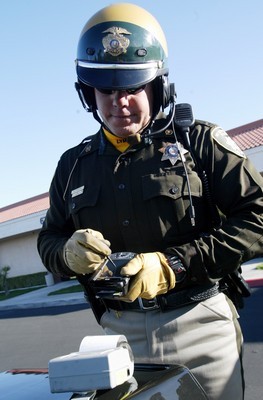More police, fewer fatalities

There’s an old saying among police: If you take credit for lowering crime, you have to be willing to take the blame when it goes back up.
It’s a saying that is in the back of my head whenever I talk numbers with police — that and the old Mark Twain line about there being lies, damn lies and statistics.
That’s why I was skeptical when I spoke with Capt. Tom Conlin, head of the Metropolitan Police Department’s traffic bureau, about traffic-related deaths.
You see, they’re down within the Police Department’s jurisdiction this year. Way down.
From 2005 to 2006, fatalities dropped 11 percent. From 2006 to this year, they are down another 20 percent.
And it’s not just fatal wrecks. Collisions with injuries are down about 6 percent, and collisions overall are down about 5 percent.
Since more drivers are on the road, with our population crossing the 2 million mark, one would think the numbers would be going up. At least that’s the excuse valley residents often hear from politicians around here.
So what’s the deal? Did most of us suddenly become safe drivers?
It seems good old police work deserves some of the credit.
Magnanimously, Conlin didn’t take any credit for himself. Instead, he said it belongs to Sheriff Doug Gillespie and former Sheriff Bill Young for getting the “More Cops” tax initiative passed. That allowed the Police Department to use designated sales tax money to increase the police force. So far about 265 officers have been hired.
When Gillespie took office, one of his major initiatives was to lower traffic fatalities.
To do so, he gave the traffic bureau what it needed most: more officers, about 35, including five who will work in unmarked cars, Conlin said.
That’s significant because it allows for more traffic officers without the need for them to pass the formidable motorcycle test.
Secondly, when Conlin took charge of the traffic bureau about two years ago, he went to his officers who worked the streets to figure out ways to curtail the rising fatal-crash rate.
One of the strategies police were using was to identify areas with a high number of wrecks and then swarm the area with patrol units and traffic officers, Conlin said. Officers call the tactic directed patrol activities, or DPA.
In 2007, police did 217 DPAs and wrote nearly 25,000 citations. Last year, police did 40 fewer DPAs and wrote less than 20,000 traffic citations.
In recent weeks, motorists will have seen these police swarms at locations like Sahara Avenue and Rainbow Boulevard and on Charleston Boulevard, between Eastern Avenue and Nellis Boulevard.
Police are also focusing on issuing tickets to folks who are not wearing their seat belts, Conlin said. If a driver gets pulled over, the officer may let every other violation go except for a seat belt violation.
Annually, there are at least 30 people who die in wrecks and weren’t wearing a seat belt. Conlin said that in some cases wearing a seat belt might not have changed the outcome, but motorists have a far greater chance of surviving a wreck if they are wearing a seat belt.
While alcohol-related fatalities will remain about the same — there were 41 in 2006, and 36 so far this year — the number of driving while intoxicated arrests are up. This year, there were more than 5,350 alcohol-related arrests, which is up more than 700, or about 17 percent, from 2006.
Erin Breen, director of the University of Nevada, Las Vegas Safe Community Partnership, which promotes traffic safety, said the police strategies and simply having more officers on the road is working.
In the past, Las Vegas motorists have had the impression they are not going to get caught breaking traffic laws, Breen said. The increased enforcement has changed the way people drive.
“The perception of being caught is having an effect,” Breen said.
Other police jurisdictions have not fared as well in 2007.
Henderson had a number of wrecks that saw multiple people die. They went from 8 fatalities in 2006 to 24 so far this year.
Fatalities were down in North Las Vegas from 29 in 2006 to 24 so far this year.
The Nevada Highway Patrol in Clark County will end up about the same over the past two years, with just under 100 fatal wrecks.
But the tragedy in those numbers, Breen said, is that more than half of the fatal wrecks investigated by the Highway Patrol involved people who were not wearing their seat belts.
“That’s just stupid. Senseless. It just blows my mind,” Breen said.
(What blows my mind is that lawmakers couldn’t get together and pass a law allowing police to pull folks over for not wearing a seat belt this past session.)
Conlin is retiring at the end of this year. He can do so with a smile, knowing he and his officers did something to help stop people from dying on valley roads.
The bad news is that the traffic fatality statistics this year only have one way to go and that’s up.
And we still have 10 days.
So be careful and buckle up.
If you have a question, tip or tirade, call the Road Warrior at 387-2904, or e-mail him at roadwarrior@reviewjournal.com or fmccabe@reviewjournal.com. Please include your phone number.